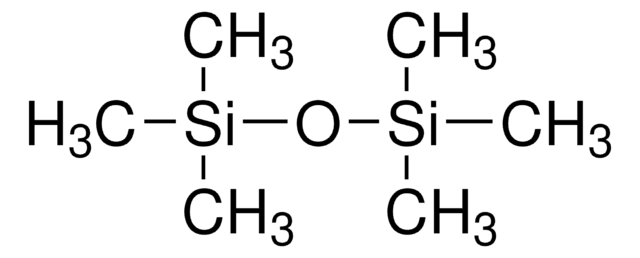DMPS5X
Diméthylpolysiloxane
viscosity 50 cSt (25 °C)(lit.)
Synonyme(s) :
Polydiméthylsiloxane
About This Item
Produits recommandés
Forme
liquid
Poids mol.
~3,780
Viscosité
50 cSt(25 °C)(lit.)
InChI
1S/C2H6OSi/c1-4(2)3/h1-2H3
Clé InChI
SEUDSDUUJXTXSV-UHFFFAOYSA-N
Vous recherchez des produits similaires ? Visite Guide de comparaison des produits
Application
- in culturing mouse embryos
- in preparation of oil-based nano-adjuvant candidates
- to reduce the brain movement in the post-cat craniotomy process
Actions biochimiques/physiologiques
Code de la classe de stockage
10 - Combustible liquids
Classe de danger pour l'eau (WGK)
WGK 2
Point d'éclair (°F)
609.8 °F - closed cup
Point d'éclair (°C)
321 °C - closed cup
Équipement de protection individuelle
Eyeshields, Gloves, multi-purpose combination respirator cartridge (US)
Certificats d'analyse (COA)
Recherchez un Certificats d'analyse (COA) en saisissant le numéro de lot du produit. Les numéros de lot figurent sur l'étiquette du produit après les mots "Lot" ou "Batch".
Déjà en possession de ce produit ?
Retrouvez la documentation relative aux produits que vous avez récemment achetés dans la Bibliothèque de documents.
Les clients ont également consulté
Notre équipe de scientifiques dispose d'une expérience dans tous les secteurs de la recherche, notamment en sciences de la vie, science des matériaux, synthèse chimique, chromatographie, analyse et dans de nombreux autres domaines..
Contacter notre Service technique






